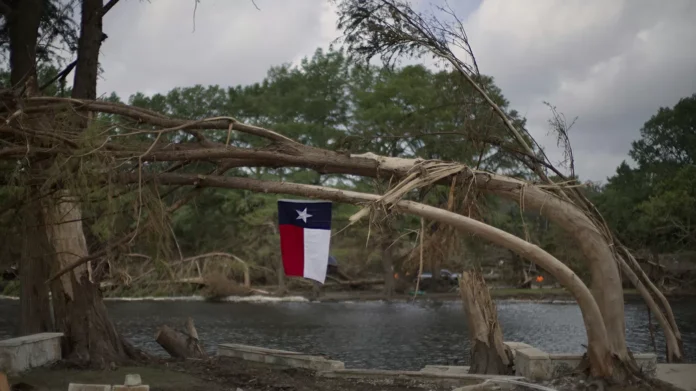Austin, Texas – The state of Texas has long been known for its dreams of unlimited development and its rush towards technological advancements. However, these dreams are now on a collision course with a new reality – extreme weather. As flash floods continue to wreak havoc on the region, it has become evident that the state’s development plans are not sustainable in the face of such unpredictable weather patterns.
Just a few weeks ago, the city of Austin was hit by severe flash floods, causing widespread damage and disruption. This was not an isolated incident, as the entire region has been experiencing extreme weather events in recent years. And the root cause of this problem can be traced back to the long-term drought that has plagued the area.
Heading into the summer, the region was facing one of the worst droughts on record, until the unexpected flash floods hit. This has left many questioning the state’s development policies and their impact on the environment. Texas leaders have been pushing for unlimited development and the influx of artificial intelligence data centers, but at what cost?
The recent flash floods have highlighted the need for a more sustainable approach to development in Texas. The state’s rapid growth and urbanization have led to the destruction of natural landscapes, which has left the region vulnerable to extreme weather events. And with climate change exacerbating these weather patterns, it is clear that something needs to be done to protect the state and its residents.
But it’s not just about protecting the environment – it’s also about protecting the economy. The flash floods have caused significant damage to businesses and infrastructure, resulting in millions of dollars in losses. This is a wake-up call for Texas leaders to rethink their development plans and prioritize sustainability.
Fortunately, there are steps that can be taken to mitigate the impact of extreme weather events. One solution is to invest in green infrastructure, such as rain gardens and green roofs, which can help absorb excess water and reduce the risk of flooding. Additionally, implementing stricter building codes and regulations can ensure that new developments are built to withstand extreme weather conditions.
Another crucial aspect is water management. With the ongoing drought, it is essential to conserve and manage water resources effectively. This can be achieved through the use of innovative technologies and practices, such as rainwater harvesting and water recycling.
Moreover, it is crucial for Texas leaders to acknowledge the role of climate change in these extreme weather events. By recognizing the need for action, they can work towards implementing policies that promote sustainability and reduce the state’s carbon footprint.
It is also essential for the public to be educated about the impact of their actions on the environment. Simple steps like conserving water and reducing energy consumption can go a long way in mitigating the effects of climate change.
The recent flash floods have served as a wake-up call for Texas leaders and residents alike. It is time to shift towards a more sustainable approach to development and prioritize the protection of the environment. By working together, we can ensure a better future for Texas and its residents.
In conclusion, while the dreams of unlimited development and technological advancements may seem enticing, it is essential to consider the long-term consequences. The recent flash floods in Texas have shown us that we cannot continue on this path without facing severe repercussions. It is time for Texas leaders to take a step back and reassess their priorities, with a focus on sustainability and protecting the environment. Let us work towards a brighter and more sustainable future for the Lone Star State.

